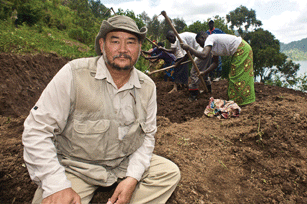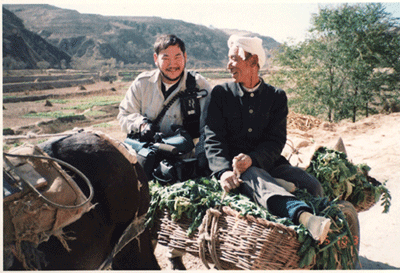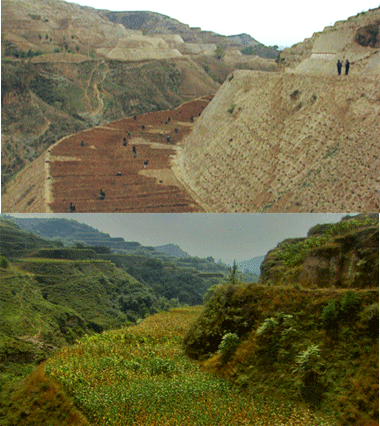
|
Published:
When predator becomes prey
Shark attacks on swimmers or surfers have a tendency to make headlines. But, there has been less public interest in the insidious depletion of the world’s shark populations due to overfishing and other human activities. Robin Taylor reports.
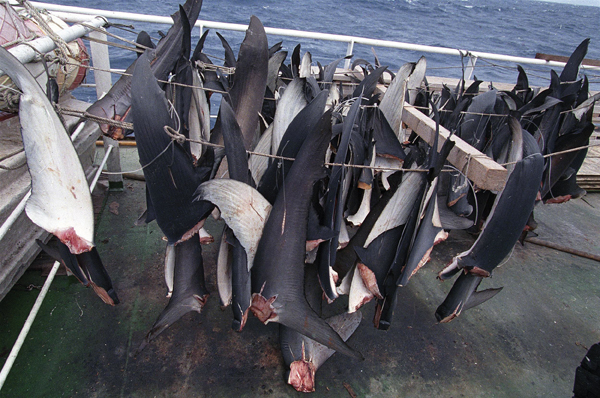
|
|
Sharkfins drying on the deck of long-line pirate vessel, South Atlantic, 2000. Credit: Greenpeace. Photo by Jeremy Sutton-Hibbert.
|
Conservation groups such as the Australian Marine Conservation Society (AMCS) and its patron, well-known writer Tim Winton, are campaigning to save Australia’s sharks. Already, they have successfully lobbied to reduce shark quotas in Queensland.
According to the Society, 100 million sharks are killed each year around the world, and shark numbers have declined by 90 per cent.
As a top predator, sharks are known as a keystone species. They maintain the balance of prey species, which sets up a cascading effect across the entire marine food web. For this reason, reducing the numbers of sharks has significant and unpredictable impacts on marine ecosystems.
Shark fins and bycatch
Compared with other fish species, the flesh of sharks is considered as low value and hardly worth the cost of freezing and transportation. However, the huge consumer demand for shark fins – largely driven by Hong Kong and an increasingly affluent Chinese market – has made sharks among the most valuable animals in the sea. In Asian markets, fins are sold for up to AU$500 per kg, and fins from the large whale and basking sharks can fetch more than $10 000.
In Australian waters, the brutal practice of shark finning – where fins are removed and the shark, often still alive, is thrown back into the sea – is banned. However, some fisheries still target sharks for their fins, while their carcasses are sold as cheap fish under names such as flake or tope.
Thousands of sharks are also killed each year as bycatch – for example, by open ocean long-line tuna fisheries.
The Great Barrier Reef
In Australia’s Great Barrier Reef Marine Park, the two most abundant reef shark species – the whitetip reef shark and gray reef shark – are under threat.
A 2006 survey of these populations by researchers at James Cook University1 found about 80 per cent fewer whitetip reef sharks and 97 per cent fewer gray reef sharks in open fishing zones than within the small area of ‘no-entry’ management zones. The researchers were surprised to find that numbers were similarly depleted in ‘no-take’ zones, and suggested the most likely reason was illegal fishing.
With commercial catches of sharks nearly quadrupling on the Great Barrier Reef between 1994 and 2003, and with recreational fishing also removing large numbers of sharks from the reef, the researchers concluded that the outlook for these shark species in the Great Barrier Reef Marine Park is not good.
Australian shark fisheries
AMCS marine campaigner, Mr Ben Birt, says because sharks are slow growing, late to mature and produce few young, they are more vulnerable to overfishing than most other fish. He argues that fishers shouldn’t be targeting sharks without scientific data about the population size – a proper stock assessment – which would enable them to set sustainable fishing levels.
Sharks are target species in a number of fisheries controlled by the Commonwealth, State and Northern Territory Governments, and are also taken as bycatch in more than 70 other commercial fisheries. Australia’s commercial shark fisheries take school shark, gummy shark, dusky shark, whiskery shark, sandbar shark and blacktip shark.
The Queensland East Coast Inshore Finfish Fishery, which includes commercial fishing in the Great Barrier Reef, has recently reduced the shark quota from 900 to 600 tonnes. This followed the recommendations of an independent review panel established by Federal Environment Minister, Peter Garrett, which included several other regulatory changes to make the fishery more sustainable. These include a maximum size limit of 1.5 metres for line-caught sharks, bag limits for particularly vulnerable species and new fixed net sizes.
Fishers have also been provided with new logbooks in which they can record 18 species of shark separately. Under the old logbook system, most sharks were simply recorded as ‘other’. Fishery Manager with Fisheries Queensland, Mr Mark Lightowler, says that as a result, since July 2009, fishers have collected useful species information that management will be able to use for stock assessment once they have enough data.
In the meantime, the commercial fishing industry claims the 600-tonne limit is too restrictive. Commercial fisherman, Mr Greg Radley, was part of the Queensland Government’s management advisory committee for the new management plan. He says that small vessel operators have been hamstrung by the new arrangements, and believes strong catch rates show that the shark fishery in Queensland is still healthy.
Can sharks be fished sustainably?
Sharks are also under pressure in southern Australia, where the school shark population is considered to be highly overfished. Between 1927 and at least 1999, the population of Australian school shark fell by about 90 per cent following historic overfishing. The species is now listed as conservation dependent.
Since 2001, the Australian Fisheries Management Authority has imposed substantial fishing restrictions, gear modifications and fishing ground closures to reduce the take of school shark.
While recognising that concern about overfishing is well founded, Mr Terry Walker, of Fisheries Victoria, asserts that sharks can be harvested sustainably – and, if carefully managed, can provide very stable fisheries.
‘In many ways, the dynamics of shark fishery stocks have more in common with whale and other marine mammal populations than they do with other fish or invertebrate fisheries,’ says Mr Walker.
‘Compared with other fish and invertebrate species, only small proportions of shark populations can be taken sustainably. Highly productive species such as squid and jellyfish, which live for less than two years, can have much higher proportions of their populations taken each year.’
Beyond our borders
Sharks move freely in the oceans and don’t observe national boundaries. Indonesia has the highest annual reported landings of sharks and rays worldwide – more than 100 000 tonnes – with the export of shark products worth over $13 million.
The shark fisheries in Indonesia are largely driven by the shark fin export market. However, managing these fisheries is difficult, because sharks and rays provide the main income source for millions of people.
In a collaboration funded by the Australian Centre for International Agricultural Research (ACIAR), CSIRO and Indonesian fisheries agencies compared the genetics of Indonesian sharks and rays with those found in Australian waters to assess the extent to which the stocks are shared.
The work highlighted the importance of managing sharks, not only from a fisheries perspective, but also for sustainability and biodiversity. More than 30 new species of sharks and rays were discovered. These species are documented in an ACIAR publication, Economically important sharks and rays, Indonesia, a major outcome of the project.2
An analysis of data from research vessel surveys in the Java Sea highlighted how dramatic the decline in shark numbers has been. Catch rates declined by at least one order of magnitude between 1976 and 1997; eg from 500 to 50 kilograms per square kilometre per hour.
The project also looked at possible management options for the fisheries. Project leader, CSIRO’s Dr Steven Blaber, says that closing areas to protect nursery grounds was not considered feasible for most shark species because of their wide-ranging movement patterns, which make all but very large marine protected areas ineffective. Capacity controls in terms of licensing and gear restrictions are possible options for some of the larger fisheries, but Dr Blaber says that trade restrictions may offer the best hope in relation to ending the market for shark fins.

|
|
Grey nurse shark on the Great Barrier Reef. Credit: Commonwealth of Australia (GBRMPA). Photo by K. Hoppen.
|
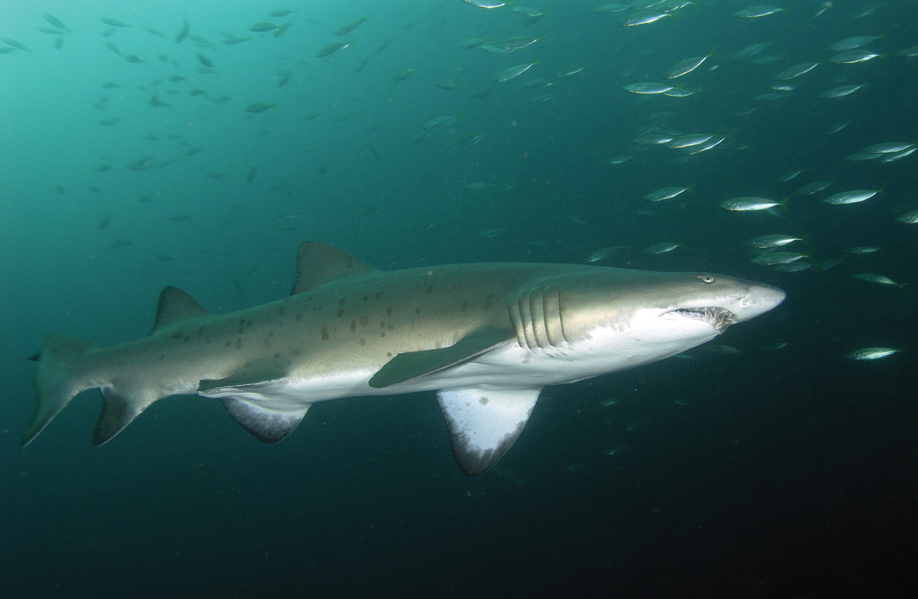
|
|
CSIRO researchers about to secure a juvenile great white for tagging. Credit: CSIRO
|
More information:
National Plan of Action for the Conservation and Management of Sharks (Shark-plan), www.daff.gov.au/fisheries/environment/bycatch/sharkplan

|
|
Gray reef shark among a school of sardines. Credit: Commonwealth of Australia (GBRMPA).
|
|
White sharks – also known as great whites or white pointers – are protected in Australian waters, but little is known about them. Scientists think their numbers have declined, but there is no baseline data. In fact, there are no accurate estimates for any populations around the world. |
To help fill this knowledge gap, CSIRO scientists have tagged around 500 white sharks over the past 10 years and followed their movements, most recently off the NSW coast near Port Stephens, where juveniles tend to aggregate. |
Using a combination of acoustic tags, satellite-transmitting tags and self-releasing satellite archival tags, the researchers are building up a picture of shark movements and behaviour that will be used as part of a national recovery plan. |
CSIRO researcher, Mr Russell Bradford, hopes the Port Stephens tagging will lead to an improved understanding of shark habitat, and aid in devising strategies for monitoring the population. In particular, the research will help his team build up a picture of the long-term movements of juvenile white sharks, including whether individuals return annually to this area. |
The team is using ongoing aerial surveys of the habitat at Port Stephens to gather accurate counts of juveniles, which will provide information about recruitment. |
‘While the sharks are in the shallow water they are clearly visible and easy to count,’ explains Mr Bradford. |
1 Robbins W, Hisano M, Connolly S and Choat J. (2006) Ongoing collapse of coral-reef shark populations. Current Biology 16(23): 2314– 2319.
2 ACIAR Publications, http://aciar.gov.au/publication/MN124


